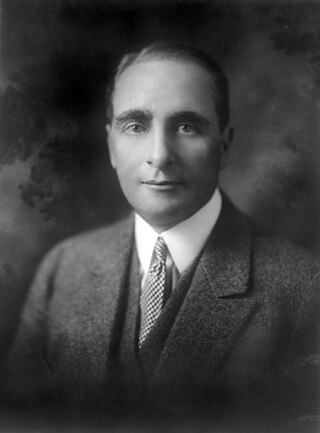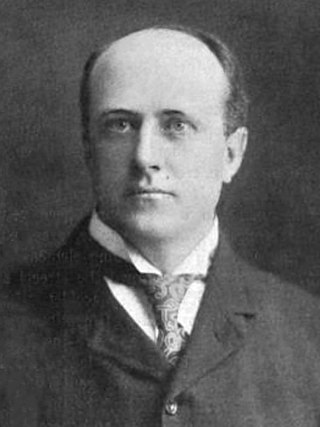
William Livingston was an American politician and lawyer who served as the first governor of New Jersey (1776–1790) during the American Revolutionary War. As a New Jersey representative in the Continental Congress, he signed the Continental Association and the United States Constitution. He is considered one of the Founding Fathers of the United States and a Founding Father of New Jersey.

Lewis Cass was a United States Army officer and politician. He represented Michigan in the United States Senate and served in the Cabinets of two U.S. Presidents, Andrew Jackson and James Buchanan. He was also the 1848 Democratic presidential nominee. A slave owner himself, he was a leading spokesman for the doctrine of popular sovereignty, which at the time held the idea that people in each U.S state should have the right to decide on whether to permit or prohibit slavery, believing in the idea of states' rights.

Ogden Livingston Mills was an American lawyer, businessman and politician. He served as United States Secretary of the Treasury in President Herbert Hoover's cabinet, during which time Mills pushed for tax increases, spending cuts and other austerity measures that would deepen the economic crisis. A member of the Republican Party, Mills also represented New York in the United States House of Representatives, served as Undersecretary of the Treasury during the administration of President Calvin Coolidge, and was the Republican nominee in the 1926 New York gubernatorial election.

Clemens August Freiherr von Ketteler was a German career diplomat. He was killed during the Boxer Rebellion.

Henry Walter Livingston was a United States Representative from the state of New York.

Dave Hennen Morris was an American lawyer, diplomat, and Thoroughbred racehorse owner who co-founded the International Auxiliary Language Association (IALA).

Henry Brockholst Livingston was an American Revolutionary War officer, a justice of the New York Court of Appeals and eventually an associate justice of the Supreme Court of the United States.

Alfred Hennen Morris was an American businessman politician, and racehorse owner/breeder.

Herbert Livingston Satterlee was an American lawyer, writer, and businessman who served as the Assistant Secretary of the Navy from 1908 to 1909.

John Albert Morris was an American businessman widely known as the "Lottery King" and a prominent figure in the sport of thoroughbred horse racing. A native of New Jersey, he benefited from a large inheritance and added substantially to his fortune through a majority interest in the Louisiana State Lottery Company.

John George Milburn was a prominent lawyer in Buffalo, New York, and New York City, a president of the New York City Bar Association, and a partner at the law firm Carter Ledyard & Milburn.

Henry Brockholst Ledyard Sr. was the mayor of Detroit, Michigan, and a state senator, briefly served as assistant secretary under Secretary of State Lewis Cass, and was the president of the Newport Hospital and the Redwood Library in Newport, Rhode Island.

Devereux Milburn was an American champion polo player in the early to mid twentieth century. He was one of a group of Americans known as the Big Four in international polo, winning the Westchester Cup six times. He is "remembered as possibly the best polo player this country ever produced." His given name has been alternatively spelled as "Devereaux" in some publications.

Cortlandt Van Rensselaer was a Presbyterian clergyman from the United States.

Edmund Lincoln Baylies, Jr. was a New York City lawyer, philanthropist, and member of New York Society during the Gilded Age.
John Jay Mortimer was an American financier and member of the prominent Mortimer family of New York.
Richard Mortimer was an American real estate investor and society leader during the Gilded Age.
Clement Clarke Moore was an American architect and soldier who was prominent in New York society during the Gilded Age.
Roland Livingston Redmond was an American lawyer who served as the president of the Metropolitan Museum of Art.

Henry Brockholst Ledyard Jr. was an American soldier and businessman who served as president of the Michigan Central Railroad and the Union Trust Company.

















